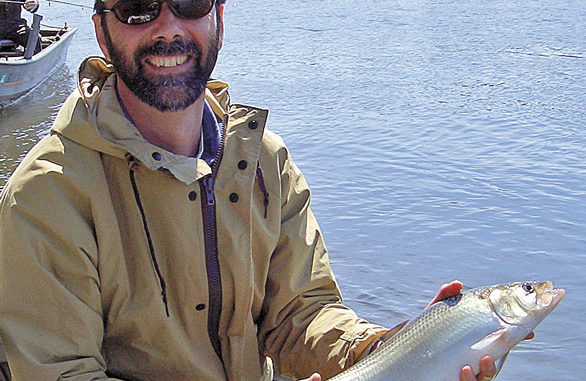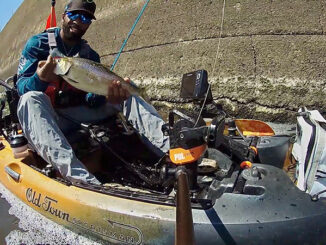
Springtime shad fishing is one of the Lowcountry traditions that stirs great excitement. No fish garners greater attention by anglers looking for a sure thing than the American shad.
The migration, driven by the urge to spawn, reaches a peak in March and April, and shad are pursued for their tasty flesh and their ability to test ultralight tackle. The female shad contains large roe, cherished for its succulent table fare.
A trip to the Tail Race Canal in Moncks Corner began by meeting John Archambault, a fisheries biologist with the SCDNR. Part of his duties is a saltwater finfish tagging program that includes spot-tail bass, but he also is an avid angler, using his knowledge of fish to target American shad.
A sunny, crisp, clear, early March afternoon found us next to the Pinopolis Dam, along with no less than 30 other boats. As we jockeyed for a mooring position among the anchored boats, the first thing that hit me was the large amount of birds working the area. The SCDNR has established a sanctuary zone right next to the dam where no fishing is allowed, and this area stewed with pelicans, cormorants, seagulls and ospreys, a display of avian feeding that would last until sundown.
We picked a spot to fish and tied plastic grubs onto our ultralight fishing outfits. Water was being released through the dam, creating a fairly strong current, and the fish were biting, creating a frenzy of angling activity in the boats on either side of us. We started by missing a few strikes but soon adjusted to the shad “bite,” and our luck proved steady the remainder of the day. Mike Farmer, manager at the Summerville location of The Charleston Angler, reports that the No. 1 shad bait is the 2-inch Got-Cha curlytail grub, rigged on an eighth-ounce jighead, with the most productive colors being chartreuse and pink-white.
Mature American shad migrate out of the ocean and up rivers along the east coast in order to spawn in their “home” territory. This makes shad a diadromous species, meaning that they can use both marine (salt) and freshwater habitats during their life cycle. Bill Post, diadromous fishes coordinator for the SCDNR, has a page on the department’s website (www.dnr.sc.gov) dedicated to diadromous fish research, including a tagging program designed to collect data from fishermen.
It’s a fact that most shad will die after they spawn, especially in the Southeast, with a mortality rate for spawning shad as high as perhaps 90 percent due to our warmer climate and higher water temperatures. At the same time, immature shad are living in the ocean, awaiting their year to make the migration.
Adult shad congregate in the summer at the Gulf of Maine, as well as The Bay of Fundy in the northeast. Since shad are very high in calories and protein, they are prime meals for bluefin tuna, sharks, bottlenose dolphin and other species during their coastal migrations. Some commercial fisheries exist for shad, and overharvest has become a topic of discussion in recent years.
Hundreds of years ago, coastal Indian tribes were keen on shad in the late winter and early spring. Colonial settlers, and every generation following them, have probably utilized this fish. Lots of factors can affect the life cycle of shad, but none has been more destructive than man-made dams. Modern technology offers a remedy though in the form of fish elevators in order to help the shad succeed during their spawning mission.
The Santee River system is one of the largest in the eastern United States, and the shad population there has increased over the past 20 years, prompting SCDNR to raise the legal limit to 20 fish per angler per day in that specific river. A limit of 10 fish per angler per day is set by the SCDNR for other waters.
In general, the shad fishery seems to be resilient and holding its own, providing anglers with an early season tradition of getting back on the water after winter in order to chase some fish, whether it be a “buck” or a “roe” shad.
The Charleston Receipts cookbook has a recipe for
“planked shad,” calling for broiling of the meat on a well-greased oak plank. I also have heard that shad meat is one of the best for smoking. Shad does have many small bones, and the following recipe cooks the fish until the bones are dissolved.
Boil shad in water and vinegar with seasonings for 20 minutes. Drain off water; put in a heavy, tightly-covered roaster and cook in oven slowly at 200 degrees for five or six hours. Put strips of bacon across the shad and place under broiler for bacon to brown.




Be the first to comment